re:ply Skateboards Interview with Danny Aubrey

re:ply Skateboards take old used or broken boards and re-use them to create brand new decks. With little more than a DIY ethic, a Zip-Zinger board template, and the desire to re-use boards, Danny Aubrey built re:ply into a brand focused on sustainability. Our friend Grant Fiero sat down with Danny to hear about his up-cycling process, working with Skatepal in Palestine, and the importance of supporting each other through difficult times.
What’s up Danny? It’s amazing to see you re-use old decks to create new ones. How did you come up with this idea?
Basically, I was a music student, and we were studying the punk and DIY ethic. Which is basically saying that if you want to release something you don’t need to rely upon record labels, or rely upon money, that you can just do it yourself. Obviously, I’m a skateboarder so I thought it would be cool to reuse a board, and at the time there were a lot of people flying around on Zip-Zingers and Zip-Zaggers, so my mate just gave me one as a template. I had this old board that had a little bit of sentimental meaning, so I thought it would be cool to reshape it, and that’s exactly what we did. I used it to skate around Glasgow, from point A to point B. A lot of the skaters were like “Oh that’s a cool little board, I’ve got old boards I can give you.”, so we started off by taking old boards from people and then remaking them. This was before any chat about climate change, or sustainability was even a popular movement. Then I decided that I could turn this into something, so we started printing our own T-shirts, and we kind of made the brand by accident from it, which we didn’t expect. Then from there, people were just liking the idea that we could reuse an old skateboard that they had before. Since then, sustainability has become a big deal, and obviously there is a big problem that trees are getting cut down to make skateboards. All of our boards are either recycled or sustainably produced and printed, we don’t use plastic, and all of the offcuts we have are turned into bottle openers or jewelry. Even the griptape off the old boards, we use as sandpaper to really try and have minimal waste and make sure everything has more than one use.
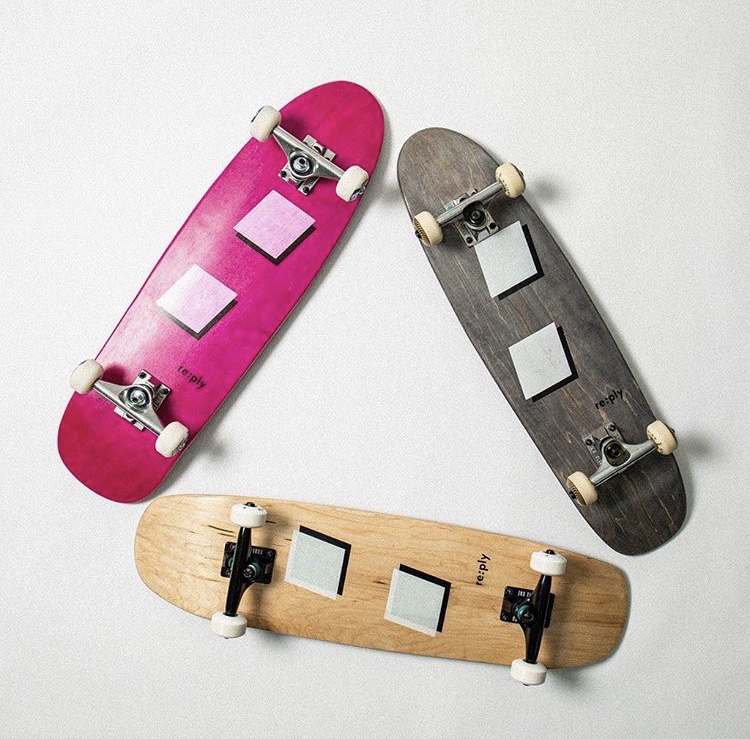
Did it take a lot of experimenting to figure out the best process of giving these boards another life, or did it work out first try?
I initially started it as a project in 2010, and I am still learning. Like I said, I am a music student, so I don’t have any real technical or woodworking background. But, I have learned a lot about doing those things through this process. Screen printing is an absolute nightmare to do, you have to figure out all the variables. There has been a big learning curve, but we’ve got to the stage where we are happy with products that people can be like “That’s a recycled skateboard, but I want to buy it because it’s recycled.” instead of “I don’t want to buy it because someone else has used it.” Changing skateboarders’ perceptions is sort of interesting.
What was it that made you realize you could use these old boards that to most people are worthless, to create your own boards?
I suppose just using the boards that I make, I skate them myself. I skate a lot, and I have snapped and delaminated lots of boards in the past. But, I’ve never snapped or delaminated one of my reproduced boards. I know that they obviously do delaminate, and things go wrong with them, but, I always think that if I can skate it, and make it last as long as a traditional unrecycled board, that other people can as well.
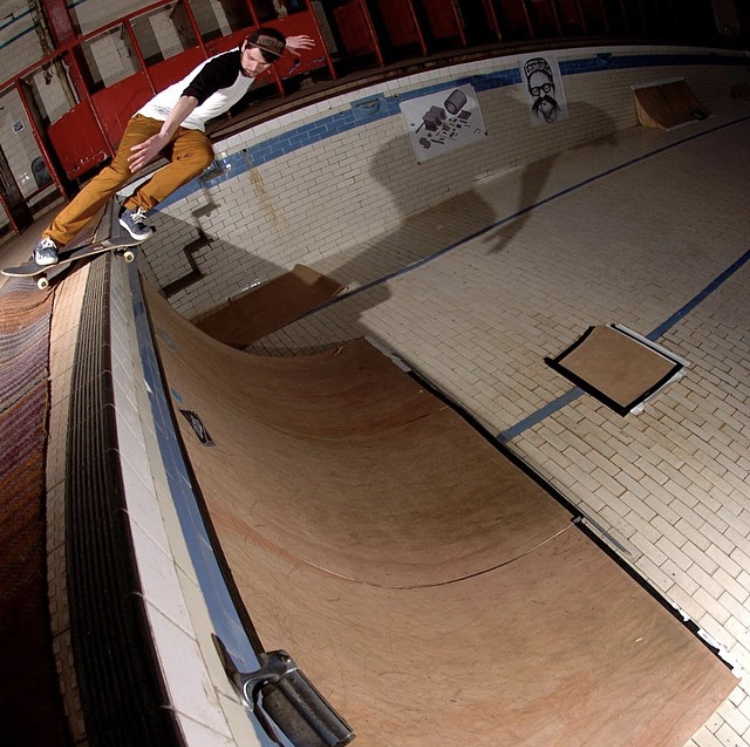
I know you mentioned Zip Zingers, was it seeing boards like that that really inspired your movement to reuse boards and make recycled boards in multiple shapes?
Yeah, originally it was because I had just started a job at a bar, and I lived at the top of a hill, and the bar was near the bottom of the hill, so I needed something to jump on when I was late for work and straight there. Since then, we realized you can take 2 millimeters of the edge of a skateboard if that, and reshape it and the shapes you can come out with aren’t actually so different from the original shape of the board.
Wow. I was looking at the different shapes you offer, and I know you mentioned originally making smaller boards, but now it seems like you don’t even need to make them that much smaller than the original board.
Exactly. You get a popsicle shape, and you can essentially turn a popsicle shape into a smaller popsicle shape. That’s what I skate.
That’s really cool. Can you take me through the steps of having an old board and creating a new board out of it?
You get the old board, take the grip tape off, sometimes you have a residue on the top, so you remove that, then put a template down depending on how damaged the original board is. I draw the template on, cut it out with a band saw, then sand it down with a belt sander, measure the sides to make sure it’s equal, then sand off the graphic, and give it a hand sand with different grits of sandpaper so it’s smoother and then screen print the graphic. Then varnish it with a water-soluble varnish, which is less wasteful and better for the environment.
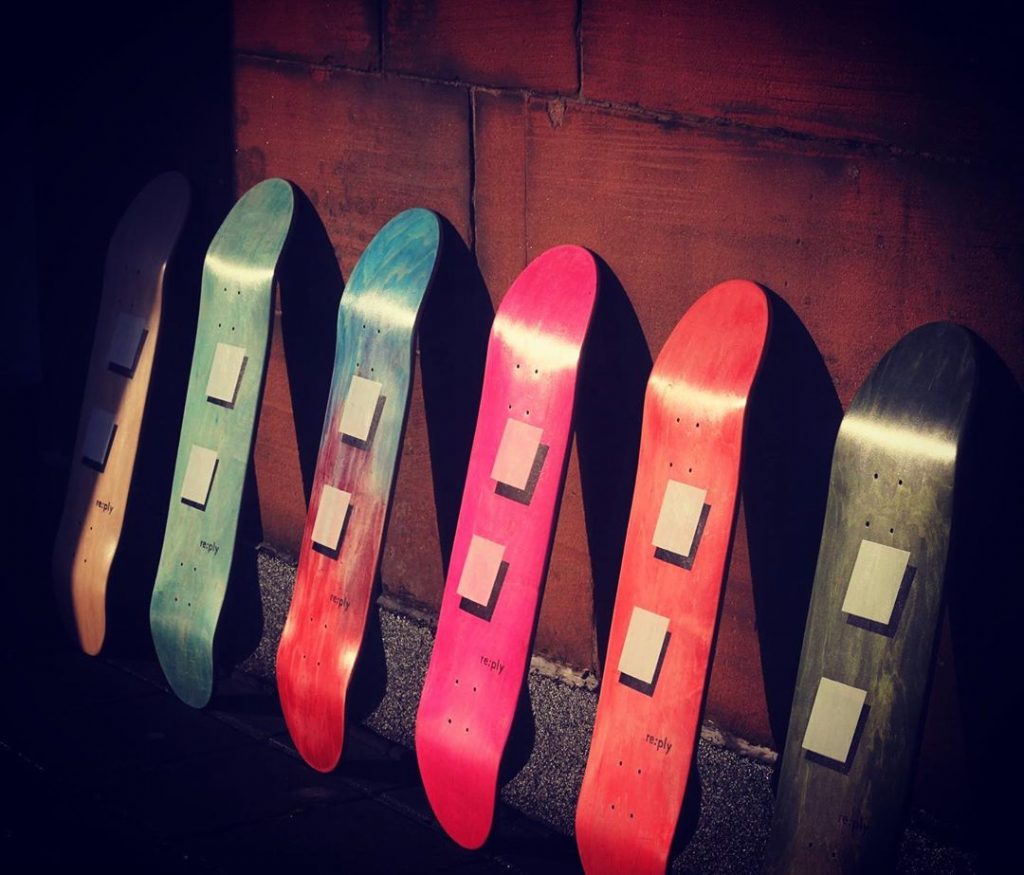
That’s rad to hear how much of the process is based around being sustainable. So is the shape of the recycled board you make pretty dependant on how beat up the original board is?
Yeah, how beat up it is, and what people order. On our website there’s a shape called the “Palo Santo”, all of our shapes are named after different types of trees, just to keep it in theme. That Palo Santo board is really close to the Zip Zinger shape actually, and people have been going crazy for it.
I’d imagine that the time to make the board is dependent on the shape, but how long would you say it takes to make a recycled board for you on average?
I do it in big batches, I just made fifteen in about three hours, if I do one on its own I think I could do it within half an hour.
It’s a cool process to think about, considering you’re taking a board that was going to be tossed in the trash and making it into a new board that will have another life.
Yep, exactly. It’s really interesting you say that because there’s people I know that skate a board until it has a couple scratches on the nose and tail, and it really doesn’t change the structural integrity of it at all, so all I need to do is sand it and put a new graphic on it, which technically makes it upcycling/recycling, even though I didn’t do much to it. A guy phoned me up the other day, he’s doing his thesis on recycling within the skateboard industry, and he said that the number one cause of deforestation within the Candian Maple Trees is the skateboard industry. Which I had no idea about.
I think it’s important that you are getting people to reuse boards, which is sustainable, but it’s also getting the idea and information out there to skateboarders.
Yeah, exactly. We’re doing this scheme where every time someone buys a board we are going to include a seed packet, to encourage tree growth, but that’s a little further down the line, within the next couple months.
Oh, that’s really cool because the board is coming from the tree, and you’re giving that board a second life, getting more out of that tree it came from, as well as promoting the planting of trees.
Yeah, exactly.
Have you collaborated with any skate shops that have collected used decks for you?
Yes, there’s a big skate shop called Route One in the UK. Route One got in touch with me and started this thing where in their shops throughout most of the UK people can bring their old boards in and put them in a bin, and then they get five pounds off a new board that they purchase. It’s called the “Deck Cycle” scheme, and all of those boards are coming to me, and they started stocking my boards in the shop as well.
That’s cool how it’s beneficial to you, a skateboarder who needs a new board and can drop off his old one, and to Route One.
Yeah, that’s been going really well. We can definitely encourage it more, but I think it will take time for people to understand why and how they should donate their old board, so it’s good we’re having this conversation.
Yeah, definitely. Is there a certain board/project that you’ve done that stands out as your favorite?
Definitely. In November we went to Palestine to work with the charity Skatepal. Palestine doesn’t have skate shops or distributions, they rely upon donations from distributors, skate shops, or skateboarders. They have a thriving skate scene out there, there are two skate parks with a third one on the way, as well as amazing street skating, but they struggle to get new products. I went out there and taught them about recycling skateboards, as well as sustainability. We learned a lot when we were out there as well, they aren’t actually allowed to recycle in Palestine, which I had no idea about, but it’s just one of these things that the Israeli occupation has enforced on them. The whole project was great, I reached out to the owner of Skatepal and told him I want to come to Palestine to do this, and he said it was a great idea, and that people usually raise three hundred or four hundred pounds to usually do that. So we got fifty artists to design boards, and we auctioned them off. We ended up selling every single one of them. The Skatepal guys thought it was a great way to raise money, so they sent us to London to do it again. This time we reached out to more places around the world, we got boards from sixteen or seventeen different countries, and we sold the majority of these boards, which raised over ten thousand pounds, which is a lot for Skatepal, they can build a skatepark out there with that. It was about building a good relationship with them, that’s been my favorite project.
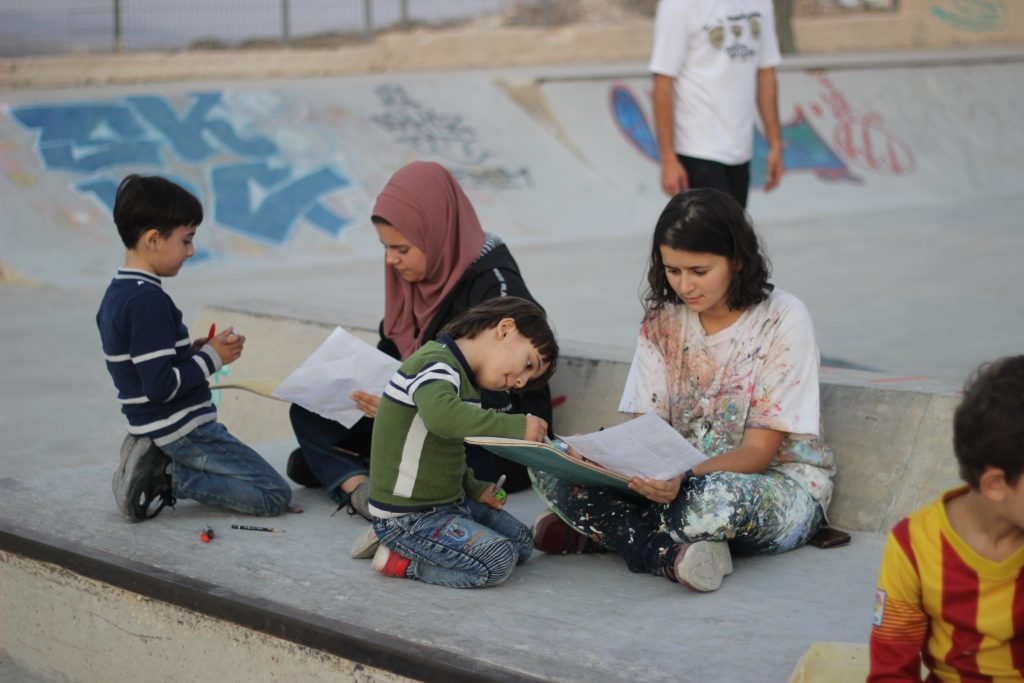
That’s cool to hear. I know earlier you mentioned you make bottle openers and other products from the scraps of the wood that isn’t going to fit into the recycled board, which is cool because you’re using as much of that used deck as you possibly can.
Yeah, exactly. We’re working with a company in Scotland called “No Comply Jewellery”, they do it much better than I do. They give me boards that are in better condition that I can recycle, and I give them offcuts of wood that they can use. That way we both get the most out of it.
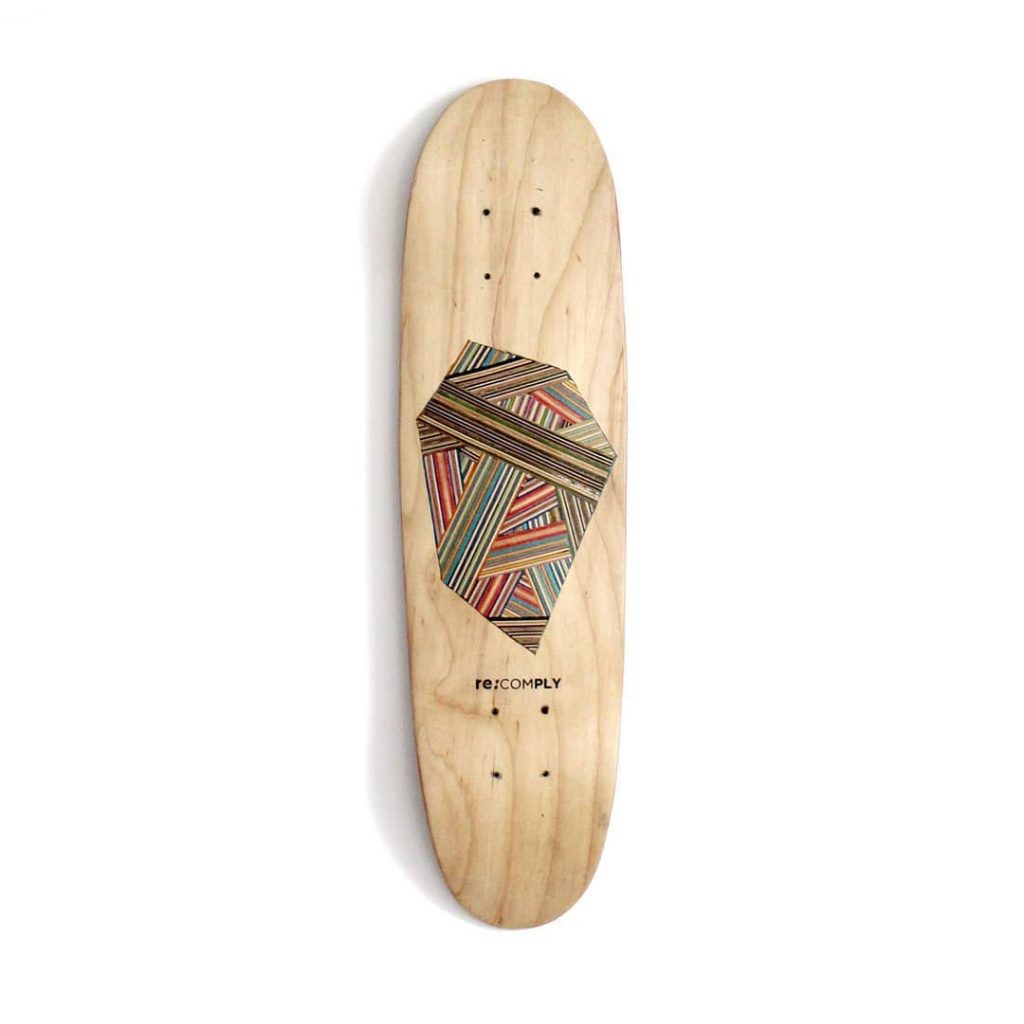
It’s cool that you both look out for each other in that way. If someone wanted to start repurposing skateboards themselves, what advice would you give them?
Skateboarding is a very weird community, you’ll have people that support you, and people that don’t support you, and that’s purely because you’re doing something different, I suppose. If you’re doing something creative that you can express yourself through, it doesn’t really matter if it makes anyone else feel happy, it’s all about how you feel. The one thing I would say is, if you’re making something with skateboards, make something that no one else is making. There’s a whole world worth of stuff you can make.
Being based in Scotland I would imagine you have had a different experience through this pandemic than us here in the United States, how have you and your organization been affected?
I think it’s the same for most businesses really, I can’t get to my workshop, because we shouldn’t be traveling, we shouldn’t be going to work essentially. The landlords completely locked all access to the workshop, which is a creative building, with lots of different spaces for people to do their different things. I knew this was coming, so this room that I’m sitting in now, we just got a new house, is our studio, so I set up a screenprinting studio so I can print lots of boards and I can do the sort of end of the process. I’m just sort of experimenting in my house with what I have, I have some basic tools, which I can take out if I want to try something. It’s a good time to reflect upon the business, and where my strengths and weaknesses are I suppose.
How has your practice of re-purposing used decks into new ones changed during all of this?
I don’t have the tools, so I can’t really re-purpose, as in completely change the shape. As I’ve mentioned, some skaters hardly skate their boards, for some completely insane reason, I don’t get it. All I need to do really is wipe it down, put a new graphic on it, and freshen it up a little bit. That’s the majority of the boards I’ve been selling over the past couple weeks, I can do that, but I can’t do what I’d like to do, and that is re-shape and encourage people to skate alternative shapes as well as normal popsicles.
Do you think following these guidelines will help brands be more respected by people in the community that aren’t skateboarders?
Yeah, I think respecting social guidelines during the pandemic is helping hopefully get it over and done with hopefully sooner than later.
Yeah, for sure. Do you have any advice or activities you can recommend to anyone out there that you’ve found helpful to stay positive through these times?
Yeah, I feel that a lot of people lost touch, they didn’t have face to face, or phone to phone conversations for a long time. I think Instagram and social media shows there’s a community there, but I don’t think it strengthens the bond between your friends or your shops. Even just speaking to someone over Skype, or just strengthening the relationships you have with people is really important. I’ve noticed that a lot of stuff on social media, people are being concerned, and showing that they care about other people, which I think is one of the biggest things in the skateboarding community, people do care. Like Jeff Grosso recently passed away, and the amount of people all over the world sending their regards to his friends and family, and the guys at DLX I’d imagine, it’s good to see that community is there. But, I think that from this a lot of people are going to learn that you need to speak and interact with people instead of just commenting or liking a post of theirs every now and again. What I’d like to encourage people to do is to get in touch, and see how your friends are doing, especially during this crazy time. Even just passing ideas, and sharing your knowledge. I’ve got 3,000 followers on Instagram or something like that, the thing I’ve been doing, which I know has helped a lot of people, is sharing all the artists that we have worked with, I’ve been sharing their artwork every single day. That’s helped to get our name out there, and also a nod to the artists, and a thank you. I think a lot of people interact with the fact that we are trying to support other people, and they try to support, it’s like a domino effect which is quite nice.
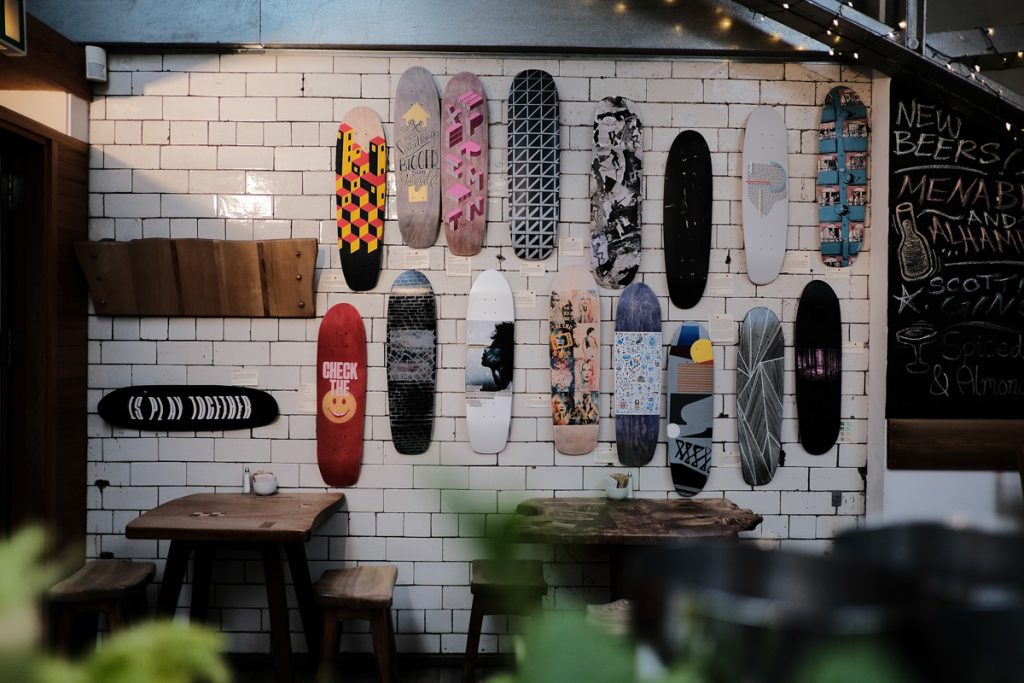
Yeah, that’s cool because as people are stuck inside I’m sure they’re on Instagram, and with your posts, they can see creative people, and maybe get some ideas of their own.
Yeah, exactly.
You mentioned interaction over the phone, is that something you’ve made an effort to do more often with your friends?
Yeah, definitely. One of my friends moved to Istanbul recently, so I spoke to him a bit. We spoke on and off, but he’s one of those guys that if you don’t speak to face to face, you could see him a year and a half later, and you could go skating with him for a week straight. There’s a new indoor skatepark, the first one ever in Glasgow, it opened up in November. They were coming up on the summer and they were obviously going to be like “Shit, the weather is going to be better, so we might struggle in the summer.”, but then this pandemic hit, so just trying to help them out, I know the manager quite well, so just speaking to them. And just speaking to anyone you like to converse with I suppose. I’ve been trying to speak to people face to face as much as possible.
Yeah, that’s rad. I think it’s important, but it can be easy to forget the importance of that during all of this.
Exactly man. The other thing I was going to mention when I said people have been speaking to me quite a lot, is that a lot of people are stuck at home, and they are stuck with old decks, and they have been like “I want to do something with this board. What can I do with it?” I’ve been seeing a lot of people recycling boards. Which, I’m like “Shit, hopefully after the pandemic that is done, just so I don’t have as much competition.” but, if they want to do it, I’m like “Cool, they’re doing something creative, and good with their time.” and I back that.
Yeah, it’s a time for people to get creative, as they’re stuck inside and thinking of ideas, and realizing that things such as a skateboard can have a longer life.
Yeah, exactly man.
Yeah definitely, thank you for taking the time to do this, it was great to hear about what you’re doing with re:ply.
No worries, it’s exciting stuff. Cheers!

